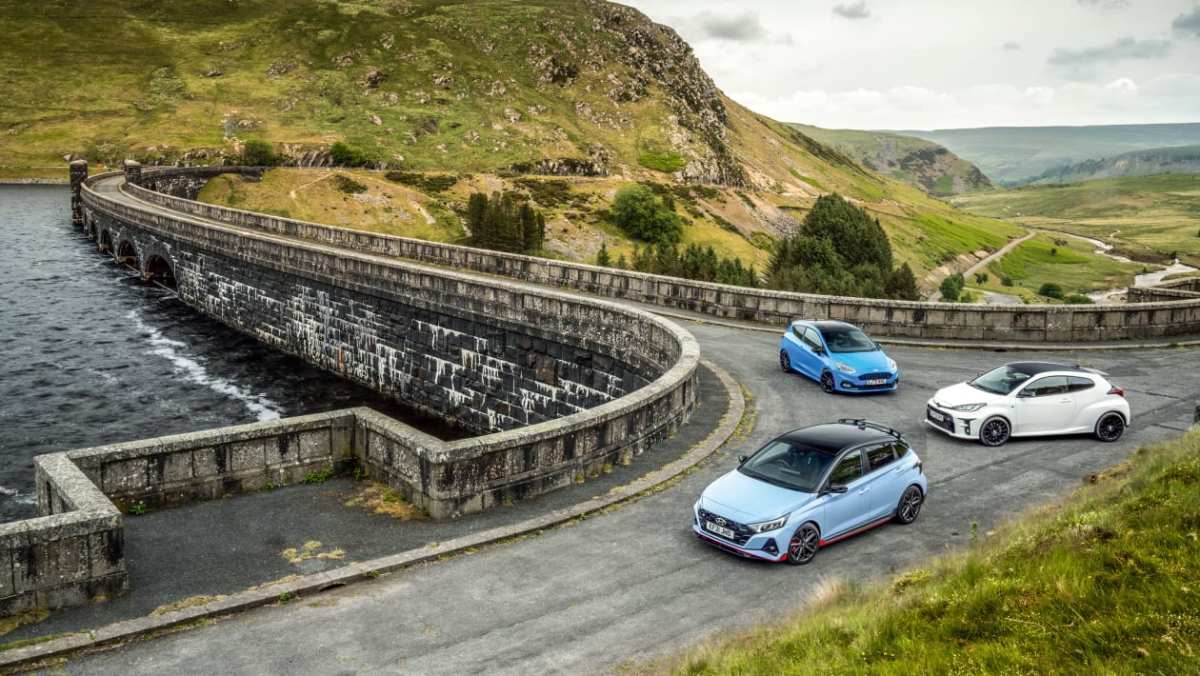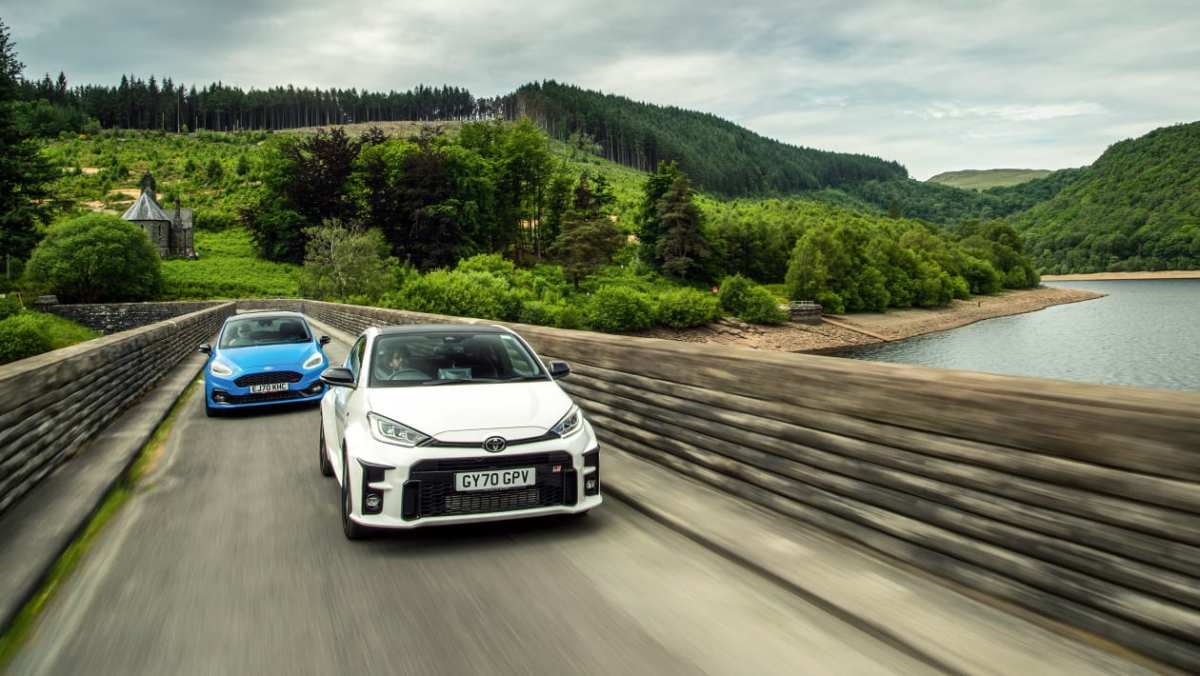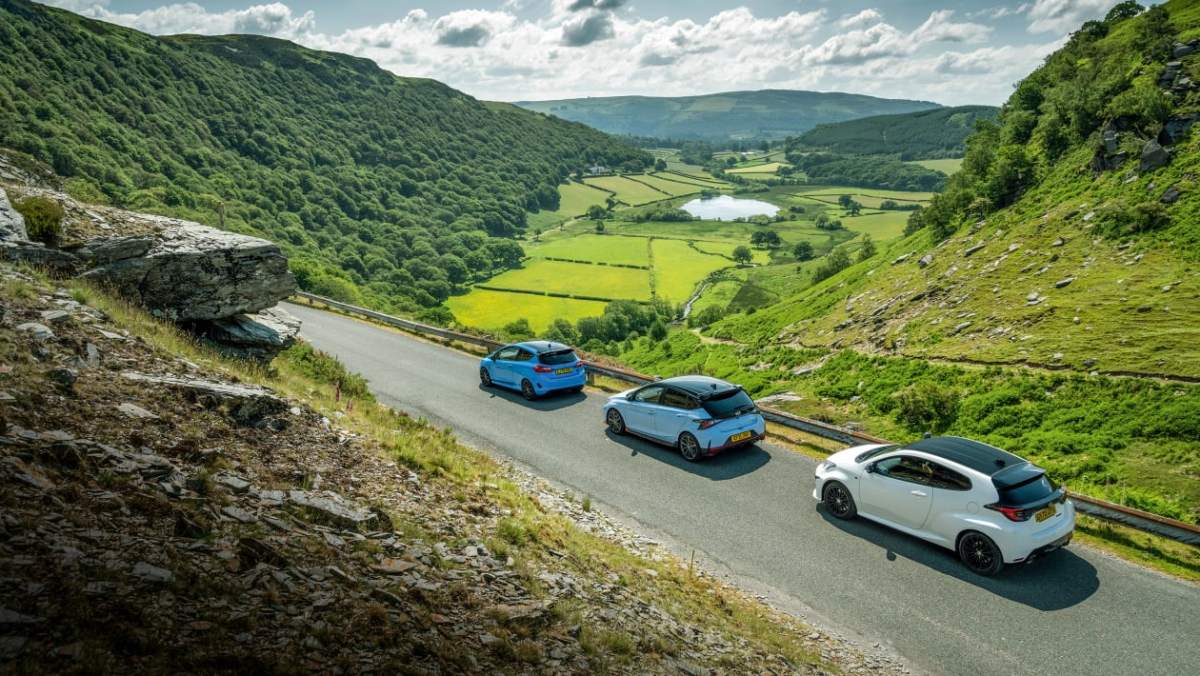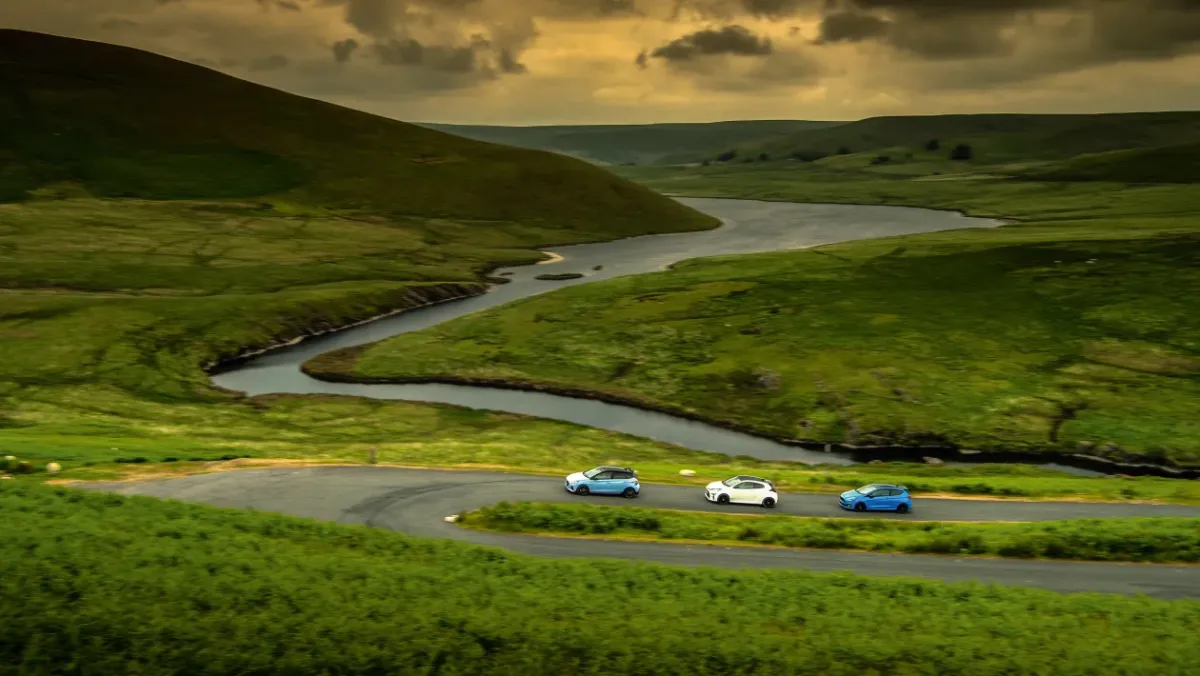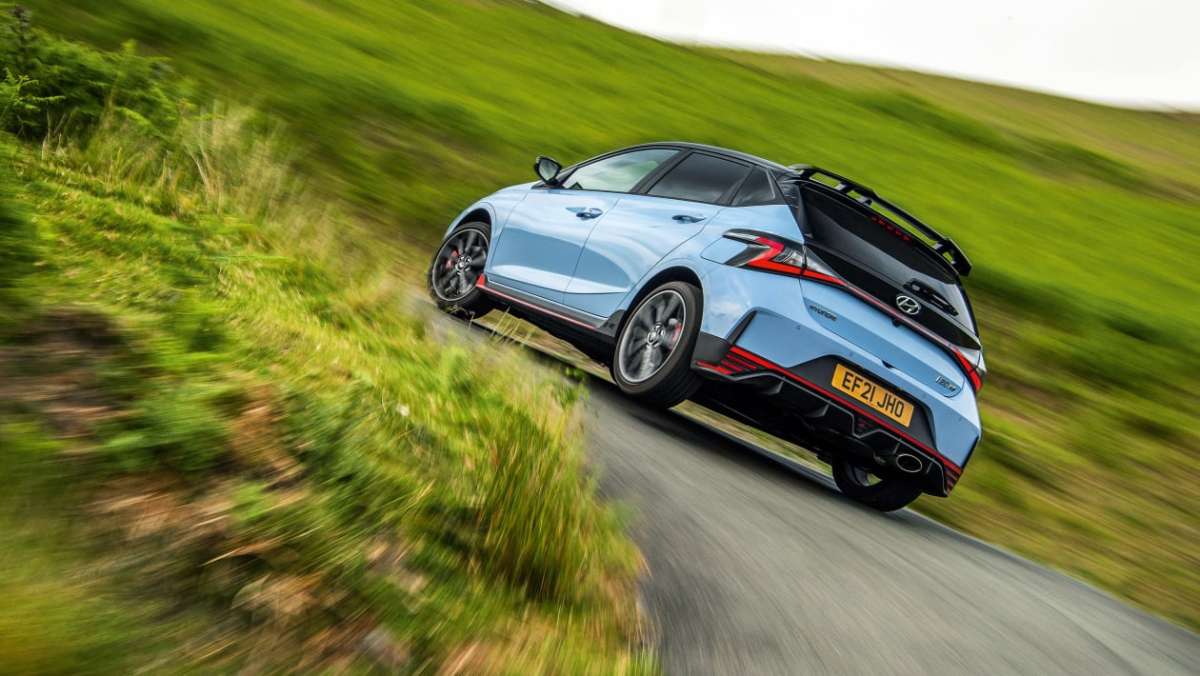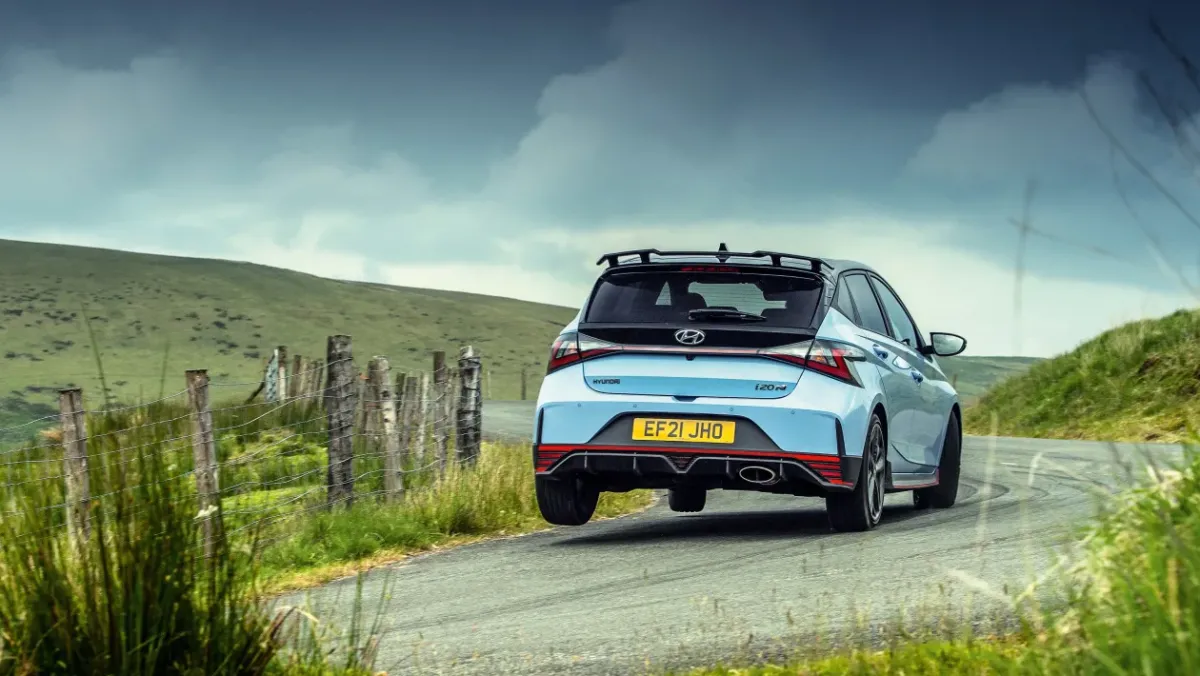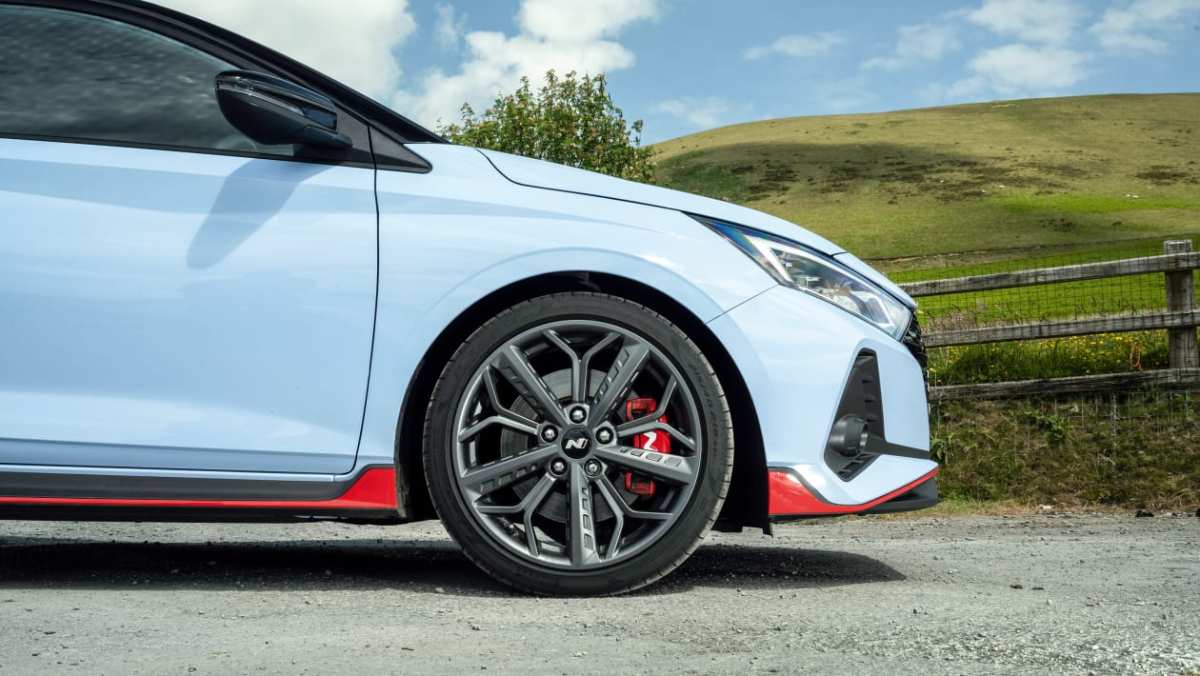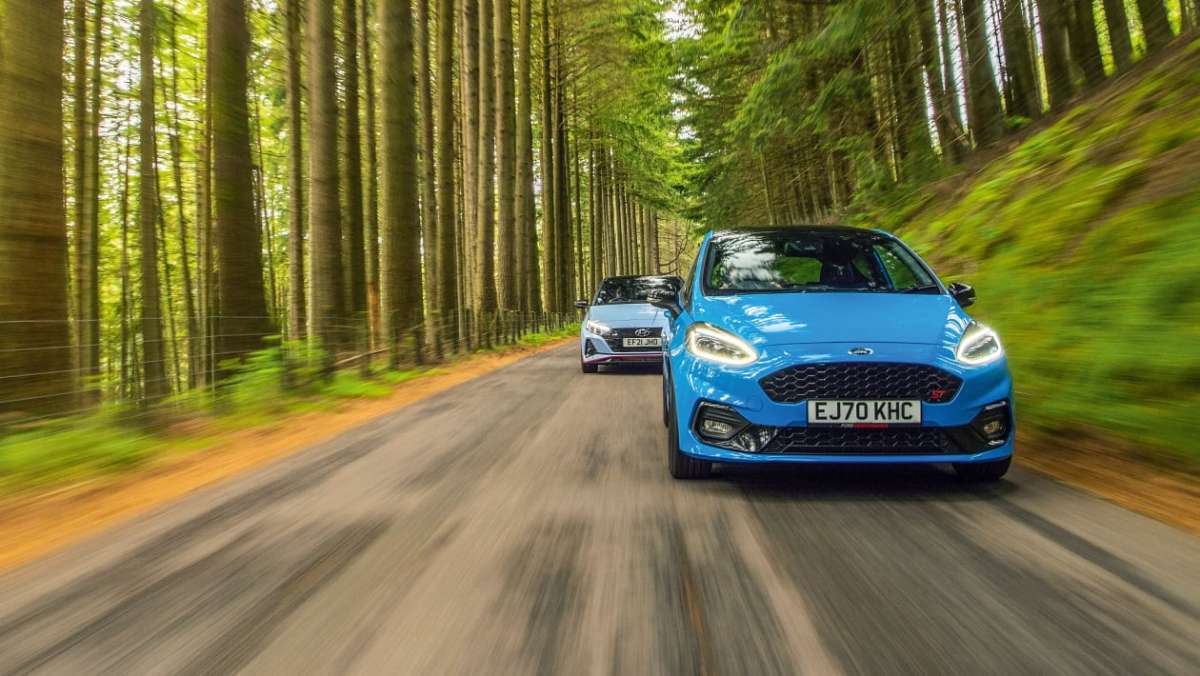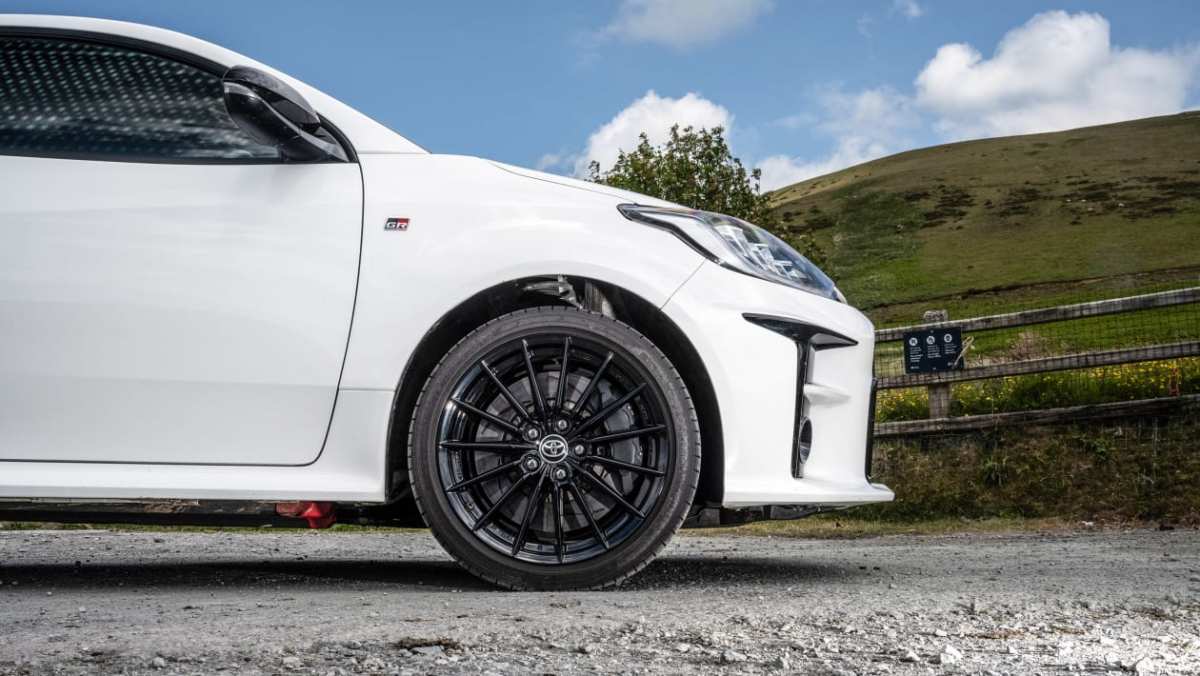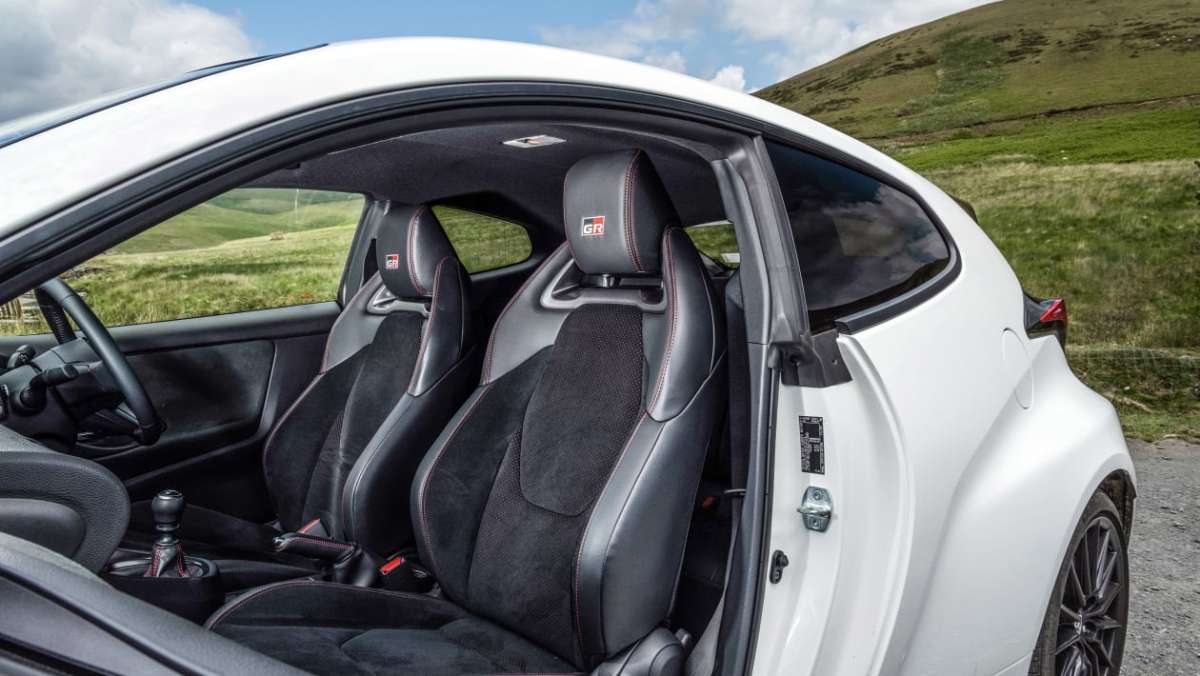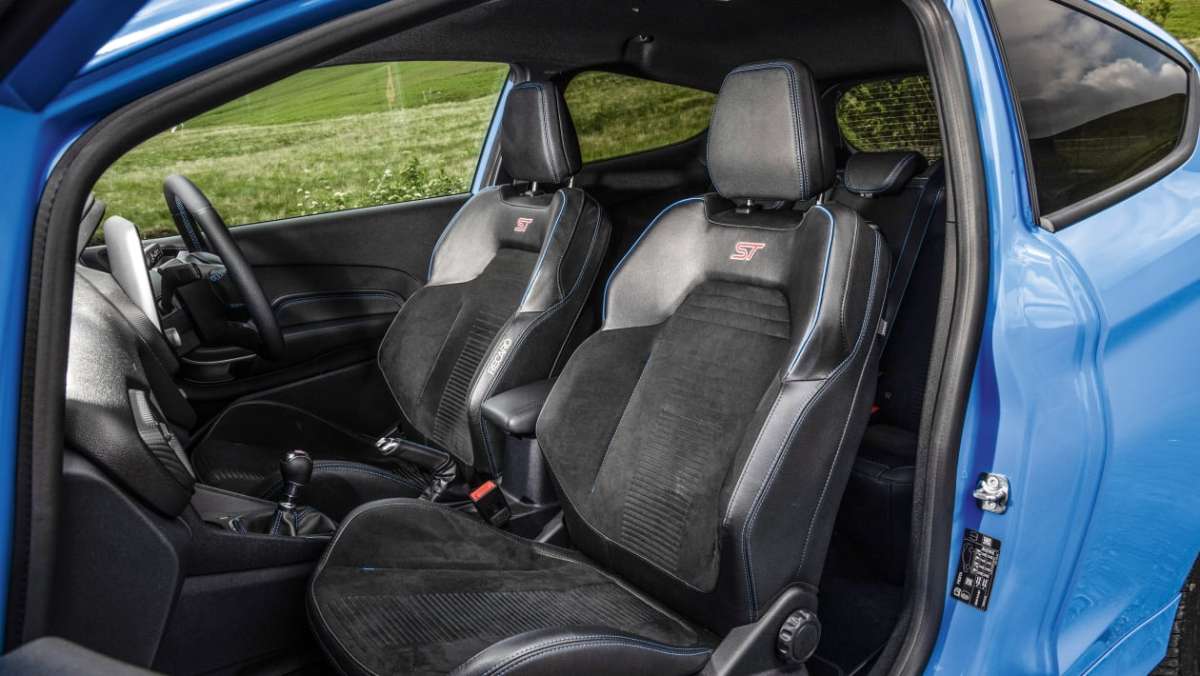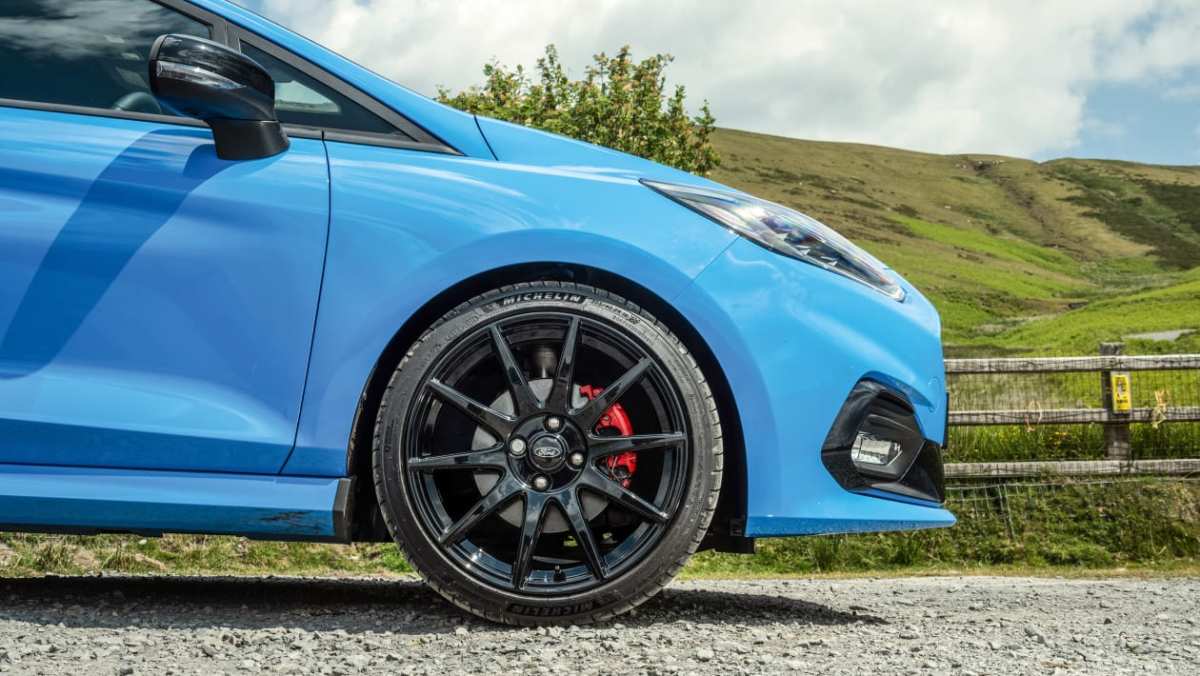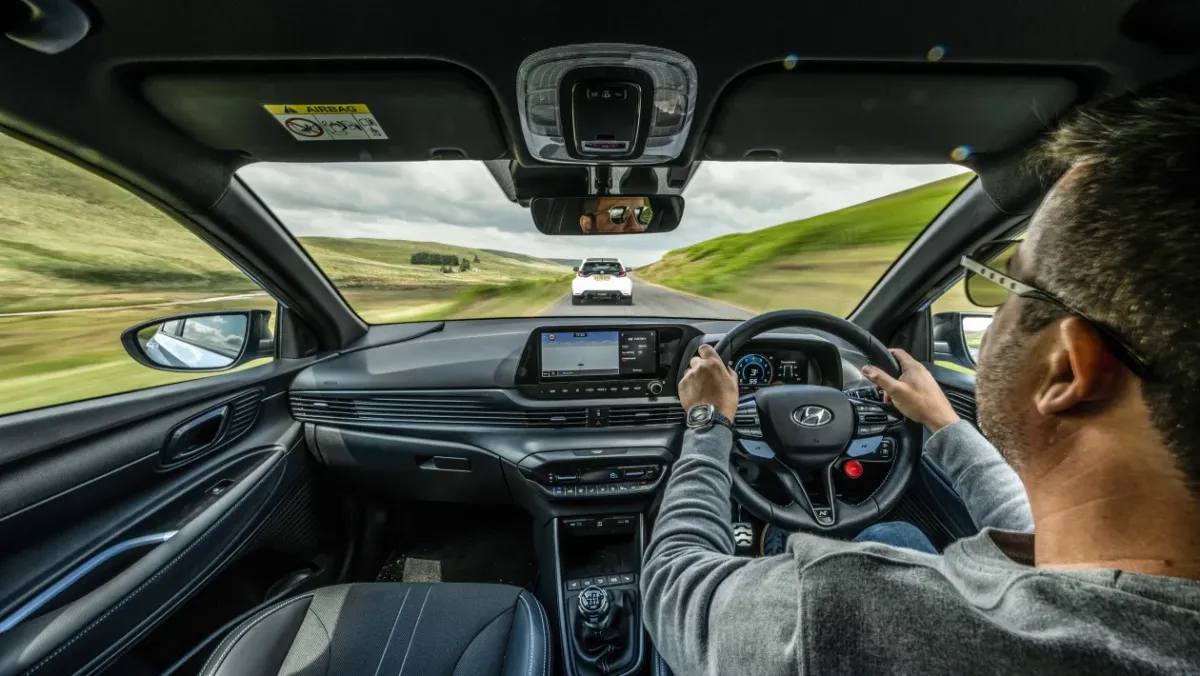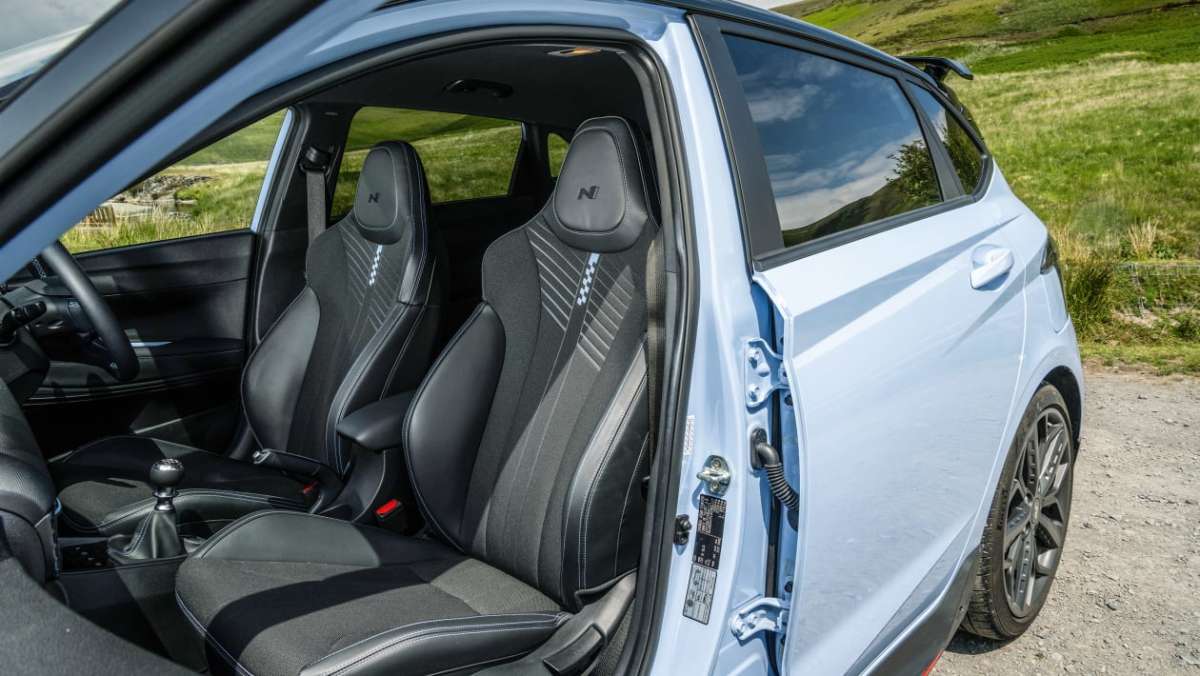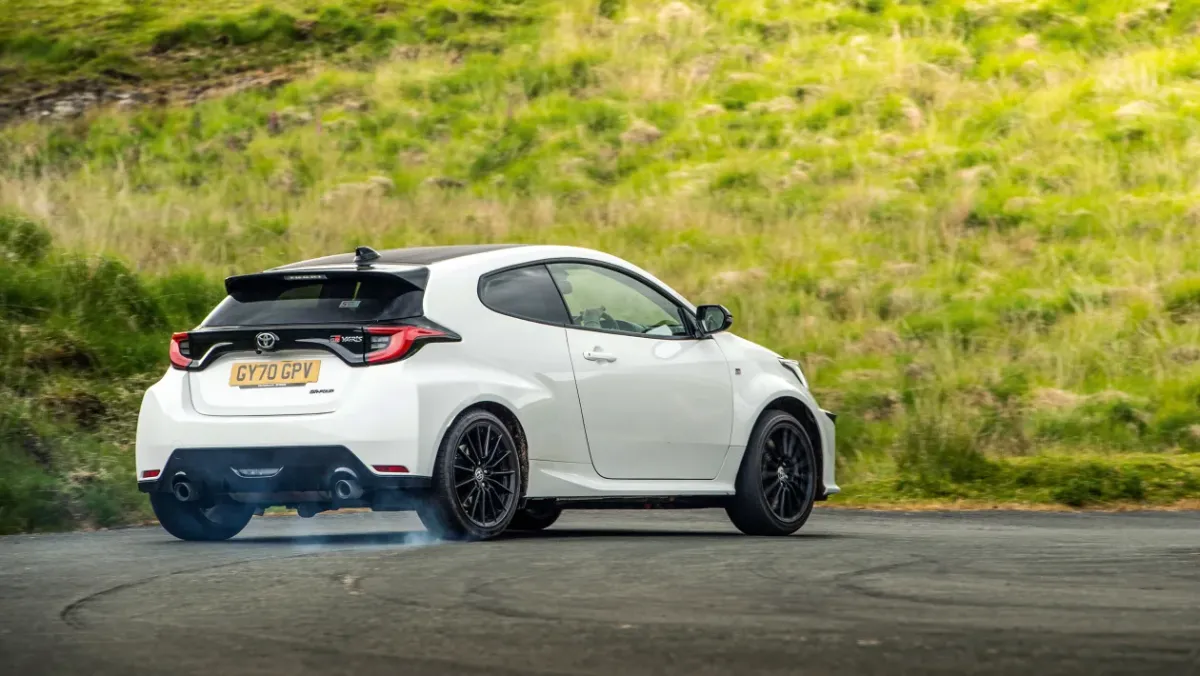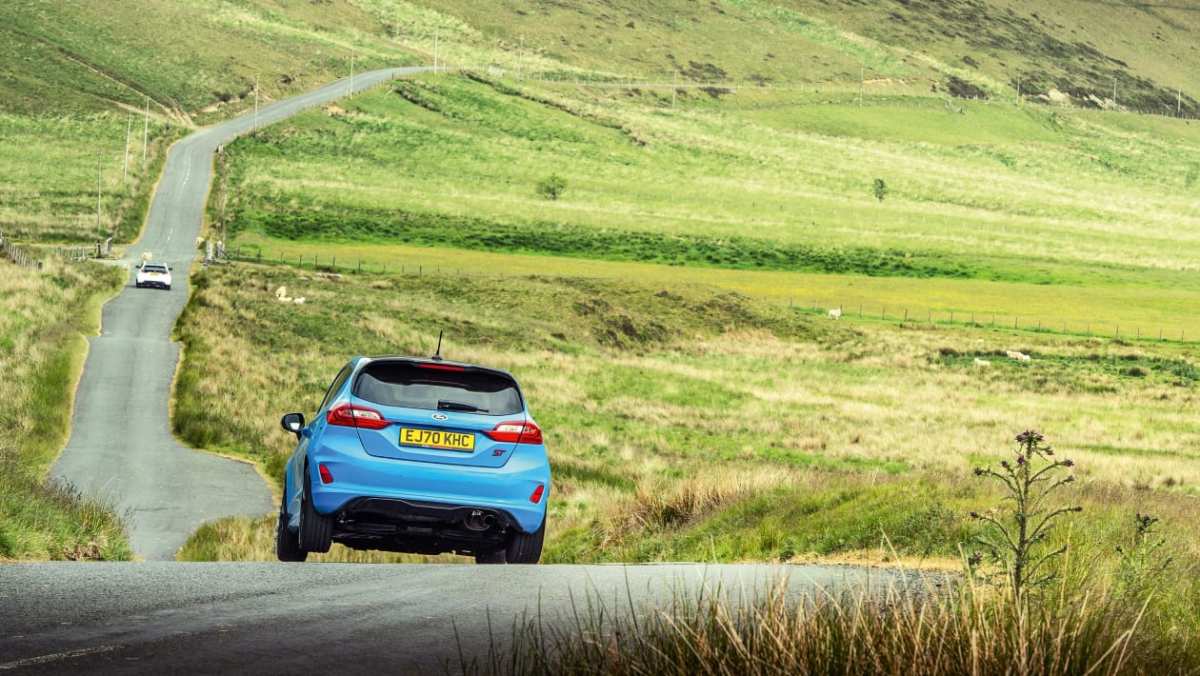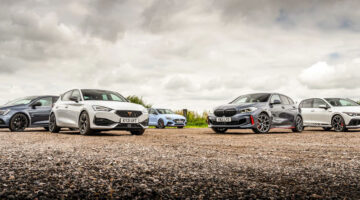(Long read): For the second of our series of shoot‑outs to determine the best hot hatch on sale, it’s the turn of the superminis. So which will be our pick of the tiddlers: Hyundai’s i20 N, Toyota’s GR Yaris or Ford’s Fiesta ST Edition?
When it comes to hot hatches, small is beautiful. Well that’s my theory, anyway. Golfs, Méganes and Civics have their place, but as the models on which they are based have grown in size and weight, so the nature of their performance has altered. No longer compact bundles of energy, they have taken on a more serious demeanour and left the simple, old-school formula far behind in the process.
If it’s proper hot hatch high jinks you’re after then the all-new Hyundai i20 N, souped-up Ford Fiesta ST Edition and much-hyped Toyota GR Yaris are the ones for you. In the 197bhp Fiesta we have a direct descendent of a high-achieving bloodline. In the 257bhp Yaris a throwback to the exotic Lancia Integrale. And in the 201bhp i20 N? Well, we have the latest product from Hyundai’s impressive N performance division; a model that treads new, pint-sized ground for the Korean giant, but is very much a spiritual successor to some great small hot hatches from the past.
> 2022 hot hatchback battle: hyper hatches
At a shade under $35,000 for the ST Edition and just over $37,000 for this non-Circuit Pack GR Yaris, they represent the toughest of adversaries for the $30,536 i20 N. But if the Hyundai can cut it in this company we’ll know it’s a cracker. Fellow contributing ed John Barker and myself are certainly looking forward to finding out, in what promises to be a proper dust-up.
Such a talented trio demands the best possible stage, so we converge on the Elan Valley in the heart of Wales, heading for roads that could have been tailor made for hot hatchbacks. Ahead of us, two days of hard driving and detailed back-to-back comparison. The full evo number, in other words.
It’s a long journey to get there, but the mix of motorways and sweeping A and B-roads is welcome, as it gives me three solid hours to get acquainted with the i20 N. I’ve been intrigued by it since Adam Towler first drove it back in issue 285 and am a fan of Hyundai’s commitment to hot hatchery. The i30 N – Hyundai’s debut N car – might be a bit light on outright exuberance but it’s big on competency.
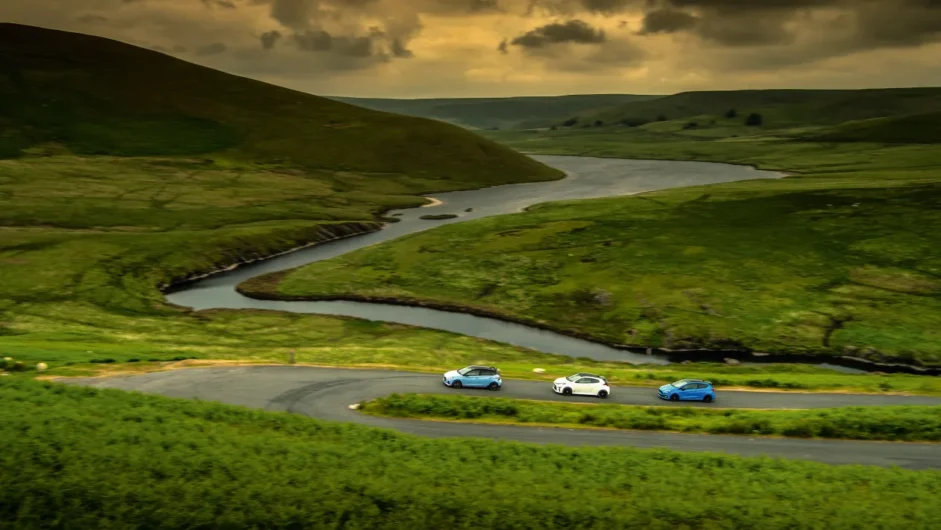
By contrast, it appears being relieved from some of that ‘eldest child’ pressure has allowed the i20 N to be a bit more outgoing in looks and deeds. Its styling is sharp and distinctive, and yes, a bit overwrought in some areas so it’s not to all tastes, but it makes a welcome statement. Likewise the interior is heavily stylised, but it looks and feels good. The flames and plasma graphics that explode across the rev counter when you engage the more aggressive dynamic modes are properly OTT, but it secretly makes you smile. A good start, then.
Something else that brings a smile is the presence of an H-pattern manual transmission and – praise be – an actual handbrake lever. In fact all three of our contenders share the same resolutely analogue approach. Unique in this company is the i20 N’s four-cylinder engine, which though some way short of the Yaris in terms of power, has a welcome free-revving nature that will contrast nicely with the gutsy but less fizzy three-pots in the Ford and Toyota.
Both driving position and the seat itself are comfortable, the latter managing to be yielding and supportive. A low scuttle offers great visibility when you peel into corners. Despite its array of buttons the steering wheel is just the right diameter and thickness, and the pedals (three don’t forget!) are well placed for heel-and-toe. And if you like the added smoothness and theatre of a blip-shift, but don’t have the knack, there’s even a rev match function to enjoy. When it comes to nailing the basics, the little Hyundai is golden.
By the time I rendezvous with the boys I’m a big fan and can’t wait to see how it compares, though sizing up the opposition suggests it’s going to be a real tussle. Both the Fiesta and Yaris are familiar faces and formidable performers. As ever the Toyota is the outlier on account of its rally-bred all-wheel-drive concept. By comparison the Ford is a highly conventional hot hatch, but in ‘Edition’ spec has bright paint, lighter, flow-formed 18-inch rims, and some lower, stiffer multi-adjustable coilover suspension. It’s the real deal.
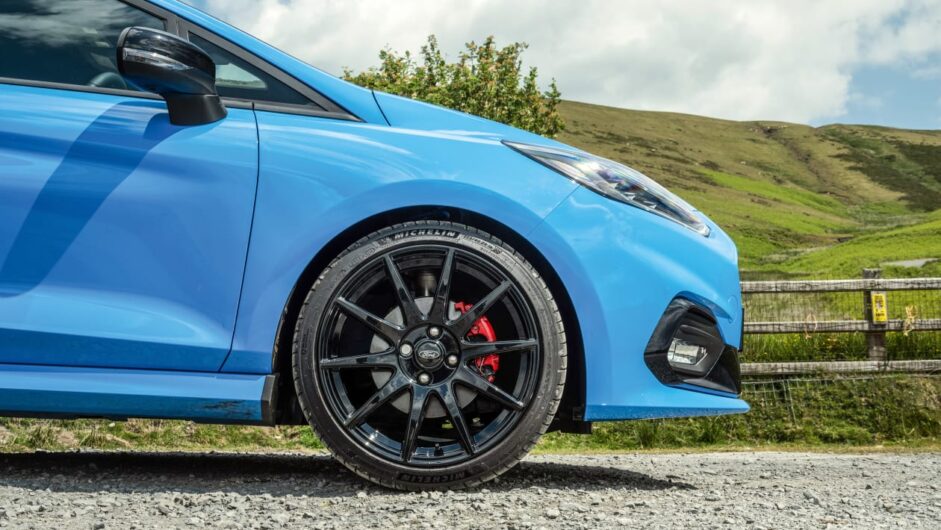
It makes sense to stick with the Hyundai for my first run along the valley road. Shrink-wrapped to the terrain and packed with twists, turns, wicked crests and punishing compressions, punctuated by fast, open schusses to stretch each car’s legs, it’s ready to ask a constant stream of difficult questions.
Right from the off the i20 N feels up for it. The engine really wakes up from 3000rpm, then keeps on delivering all the way through to the better part of 7000rpm. It’s hard to read the true aural character of the engine as there’s some piped-in noise in the more dynamic settings, but its a smooth, responsive motor that has some real zip.
The gearshift is a highlight. Precise but with a slightly soft edge to the gate, you can freely flip the lever back, forth and across with very little in the way of obstruction, yet it retains a certain mechanical feel. It’s switch fast but also offers some tactility and connection. The brake pedal has a satisfying firmness, but also good modulation, the bite progressive and linear so you can be smooth whether brushing or burying the middle pedal. It’s a car that has clearly been finessed – proof that those responsible for Hyundai’s N models really have a grasp of what’s required.
You’d expect the i20 N to be firmly suspended, and it is. Barker accurately describes it as ‘a bit thumpy, ride-wise’, but there’s just enough pliancy for it to remain on the civilised side of stiff. Early encounters with a few yumps and compressions suggest a slight lack of wheel travel, but with more miles it seems the deeper issue is a lack of rebound damping. Without sufficient force pushing the wheels into the road, when the surface falls away beneath the car you can find the wheel still heading downwards when the road comes back up to meet it. String a few of these sharp undulations together and if you’re carrying speed (and you will be) it bruises its bump-stops as road and car get slightly out of sync.
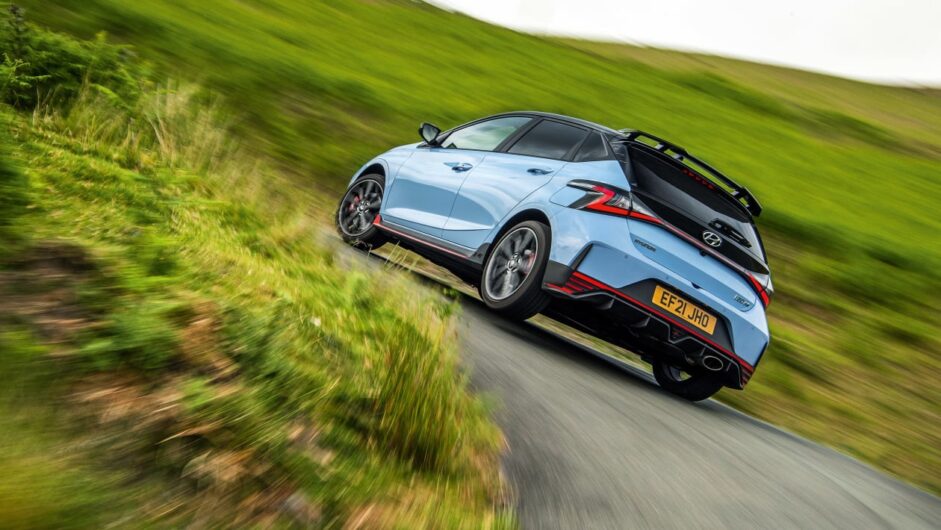
It’s a gripe rather than deal-breaker, and in truth there’s something to be said for a car that requires you to read the road and occasionally temper your speed. What’s beyond question is its appetite for corners and direction changes. There’s an effective and surprisingly subtle-acting limited-slip differential to put the torque into the tarmac, so it really hooks up and shoots out of corners, and all while holding a tight line without tugging the wheel in your hands. Steering feel and weight depends on the selected mode: it’s light and free in Normal, but you’d ideally have a bit more steering effort; Sport introduces some welcome weight, but with it comes a slightly stodgy feel – one which increases with speed and is magnified in N mode. To be honest I find it a bit of a fiddle to navigate my way into the full depths of the dynamic settings (you can individually tweak powertrain, steering, suspension and the stability control thresholds), but both Barker and I reckon Sport is the sweet spot, JB saying the steering ‘has a brightness and clarity that seems to suit the transparent chassis feel’.
The i20 is also very ready to cock an inside wheel – always a good sign in my book – and has a tremendous sense of being on its nose as you turn in. It’s a little bit naughty, egging you on without being overbearing. And when you really do throw it down the road it revels in operating just at the tipping point of instability without actually giving you a scare.
The result is a car that thrives on being asked to do lots at once. You can nail it into a combination of corners, leaning hard on the front end with a rear wheel in the air, then immediately flick it into the next turn, and it’s even happy to brake into it if the next corner is tighter than the last. High-speed corners are also fun, that sensation of loading the front and hoisting an inside wheel slightly toned down, but still apparent. I can honestly say I’ve not enjoyed a new car quite so much as this in years. The Fiesta and Yaris have a fight on their hands.
If the i20 N is very clearly the product of an up-and-coming factory performance brand, the ST Edition has the look and feel of a well executed tuner car. That’s not meant as a criticism, but the Ford Performance Blue paint, the choice of wheels and the coilovers visible between their spokes are more aftermarket than OE. The interior shares the same look and feel, trying hard to exude sportiness, but relying on the same old tropes of embroidered ‘ST’ logos, Alcantara and slivers of carbonfibre.
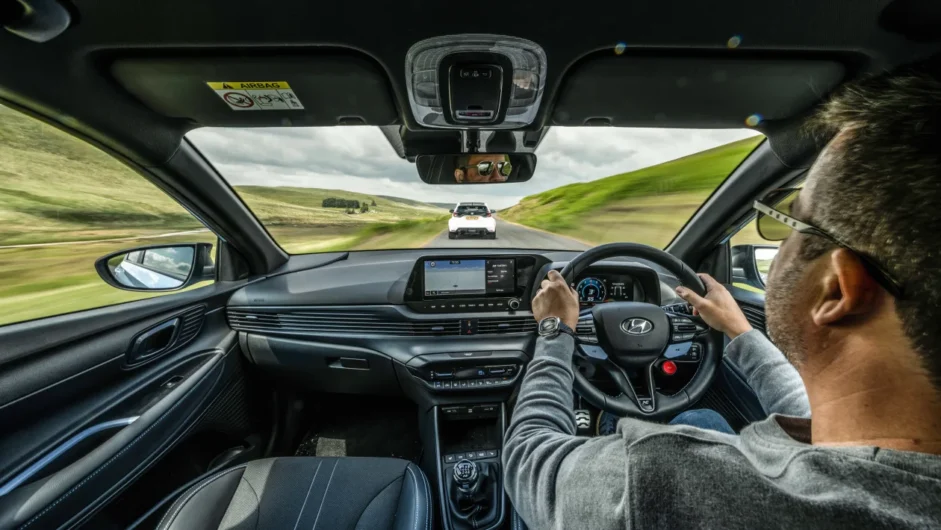
The Recaro seat is excellent, as is the driving position. The Fiesta’s interior feels bigger than the i20 N’s, but once up and running the ST has a tight, compact feel. The engine is immediately impressive, though you do notice an increased inertia compared to the Hyundai. The gruff note is quite endearing, but it lacks nuance and never really sings.
The gearshift is light and springy, with a short stubby lever to slot through the six-speed gate. The brakes have plenty of bite – a little more initial power than the i20 N’s, actually – but this response comes with excellent progression, so you don’t have to think too hard about measuring your pedal pressure.
What separates the ST Edition is its chassis. Riding 15mm lower at the front and 10mm at the rear, the dampers offer 12-way bump adjustment and a further 16 clicks of rebound. It’s a serious set-up, though as with any manually adjustable suspension it is potentially befuddling. I’d wager most owners will settle on a road set-up they like and stick with it.
At low speeds you can hear faint clonks and clicks from the suspension. If you’re not used to cars running coilovers this might come as a surprise, but just think of it as the car interlacing its fingers and cracking a few of its knuckles before going on with the job at hand. Barker, who lived with a regular three-pot ST a few years back, is a fan: ‘The Fiesta ST has always been all about instant gratification: the beefy steering is very responsive just off centre, the engine picks up quickly and strongly and there’s lots of detail to the ride. It feels alive, alert and keen to get stuck in.
There’s no doubting the control this fancy suspension brings. Almost regardless of what comes its way the car feels unfazed, springs and dampers soaking up the punishment without ever being deflecting from your chosen trajectory, even if you hit a mid-corner bump with the front-end fully loaded. There are many moments where you wince but the suspension never bottoms out, and a few where the forces involved work the suspension to the limit of its compression, but even then it never really feels like it’s struggling to cope.
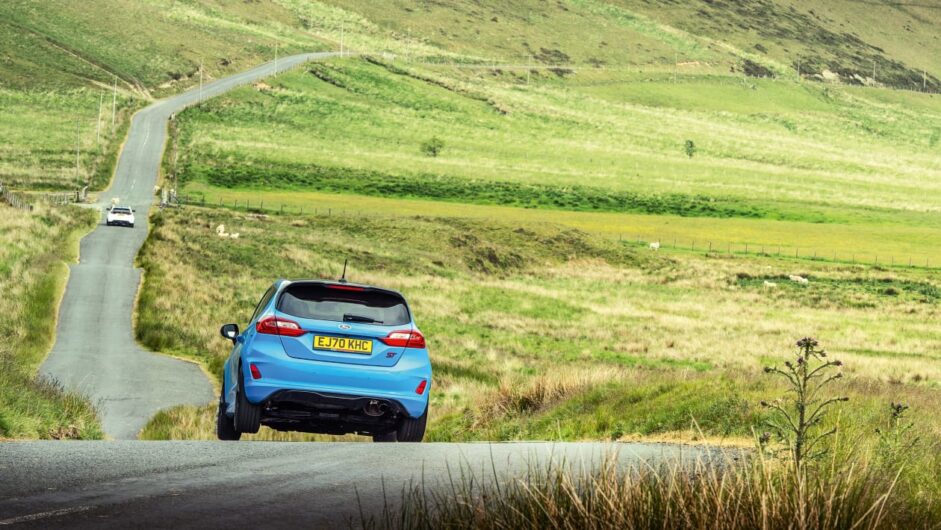
There’s a ton of traction too, the Pilot Sport 4 tyres digging in as through they’ve got spikes. The limited-slip diff is more aggressive than the Hyundai’s, and this does shape the driving experience thanks to a sensitivity to cambers, surface changes and white lines. There’s an occasional tug of ’90s-spec torque steer, but on the whole you’re just aware of the ST being busier and requiring frequent small and instinctive nudges of steering to counter the diff’s sniffer-dog tendencies.
Best of all, this poise and purchase doesn’t come at the expense of agility and excitement. Like a boxer the ST is always on its toes, stable but ready to move in any direction. In this respect it’s like the Hyundai, though the sensations and responsiveness is notched up a few clicks. If steering corrections are needed they’re only modest and wholly intuitive, so there’s this wonderful sense of just being able to let the car flow along the constant scroll of road between where you are and where you’re looking.
Working my way back to our rendezvous point in the neck of the valley is a chance to slow things down and take a moment to consider the scope of performance these cars offer. We often complain about the increasing irrelevance of the power and pace of today’s 700bhp supercars, but in truth everything below those exotics has been dragged up with them. It used to be the case that something like an E46 M3 was just about perfect in terms of grip, grunt and speed across the ground, but right now, with a faint glow of perspiration and that brilliant background adrenaline buzz you get after a truly great drive, you’d have a hard job convincing me you need anything more than a 200bhp hot hatch. It’s a view with which Barker concurs: ‘Back in the late ’80s, the Sierra RS Cosworth was a thrill and it also had 200 turbocharged bhp and weighed around 1200kg. The difference is that the power delivery of our modern trio is broad and generous, not the firework-like fizz…bang! of the Cossie. Also, the grip of current tyres is significantly better than the 205/50 R15 Dunlop D40s of the Sierra, so the pace these three can carry is astonishing. I doubt you could go any faster along here in anything else. Or that you’d want to…’
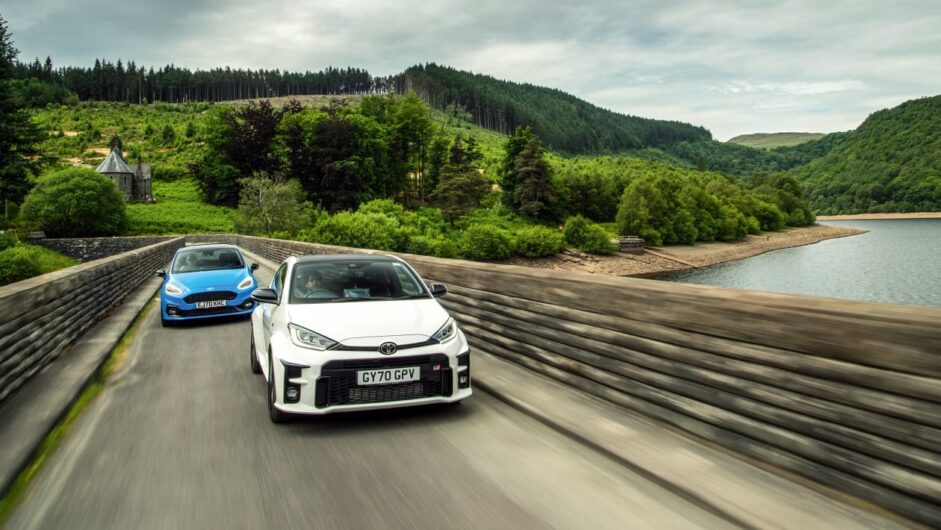
Which segues us nicely into the, ahem, gripper and more powerful GR Yaris. Overkill? Perhaps, but the endlessly documented appeal of the Toyota is the fact that it packs so much hardware into such a small machine. Until now our attentions have focused on the Circuit Pack-equipped Yaris, but in order to drop its price closer to the Hyundai’s, and to see how much of the GR’s magic comes from the clever diffs, better tyres and sportier seats, it’s the basic version we have here.
Judged on looks alone the Yaris has the measure of the other two. It’s boxy and brutal, but the wide track, broad wheelarches and minimal overhangs give it an impressive physique. The interior is more workmanlike, with a seating position that could do with being an inch or two lower. The infotainment screen and rear-view mirror create a letterbox view forwards, which also takes some getting used to. The pedals are widely spaced so heel-and-toe requires a bit more ankle rotation than ideal, but it’s still possible.
The engine has some character about it – triples always do – and there’s a big swell of torque in the lower mid-range that’s impressive, creating an impression of potency that puts it a step above the i20 N and Fiesta. The weight and precision of the gearshift always comes a surprise – you don’t expect it from a hatchback – so there’s a feel of engineered substance, even if it does mean plotting a more deliberate course through the gate than with the lighter, freer shifts of the i20 N and ST. Likewise, the brake pedal is hard beneath your foot, which lends further emphasis to the GR’s seriousness of purpose. It all gels supremely well, so although it feels distinctly different to the Ford or Hyundai, you’re quickly piling down the road enjoying the generous torque and praising the controls.
As you’d expect, the balance is very different. Where the i20 N and Fiesta very much feel pinned over their front axles, the Yaris rotates around its centre and works all four corners to punch its way down the road. Where the front-wheel-drive cars dance, the Yaris remains nailed, rewarding you with a delicious sensation of just beginning to squat onto its outside rear wheel when you work it to its limit through a medium or fast corner.
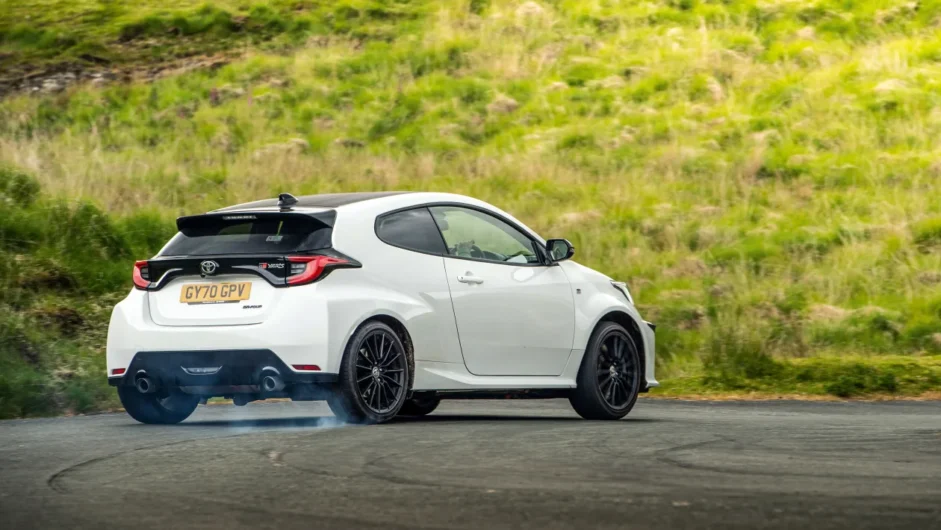
This difference in dynamic character is perfectly expressed in a single moment later in the test. I’m in the Hyundai, ahead of me is digital news editor Jordan Katsianis in the Fiesta, and behind me is Barker in the Yaris. We’re chasing into a long, third-gear left-hander complete with smooth Shellgrip surface. As the Fiesta dives into the turn its inside-rear wheel lifts a few inches clear of the road and stays there for the duration of the corner. I can feel the Hyundai is doing the same, while a glance in the mirror reveals the Yaris to be doing its best to lift its inside front wheel. As mental snapshots go, it’s an absolute belter.
If there’s a question mark over this basic GR Yaris it’s that the Dunlop SP Sport Maxx tyres don’t have the bite and raw grip the Circuit Pack’s Michelins deliver. Ordinarily less grip would be a good thing, but the Yaris is a car that revels in extreme roads and has an inherently calm rate of response. If anything it could do with a dartier front-end, even in Circuit Pack spec, so the dull-edged Dunlops don’t help its cause.
What the Yaris does better than anything is attack a road that undoes the Hyundai’s damping and even leaves the Fiesta mildly flustered. And all the while you’ve got the deeply impressive coalition of that gutsy engine, rifle-bolt gearshift and bulletproof brakes to make things feel special at any speed.
Conclusion time. Rare is the test where three such different cars score so closely. Each is immensely desirable in its own way and all hit the bullseye when it comes to the kind of charisma and kudos that separates evo favourites from the merely good. I’ll confess to having a real soft spot for the i20 N. I just love what it does and how it does it, even though I know that objectively its damping has flaws and its steering feel could do with a fraction more finessing. Five-door practicality and a usefully cheaper price tag are certainly compelling counterarguments to these mild dynamic misdemeanours.
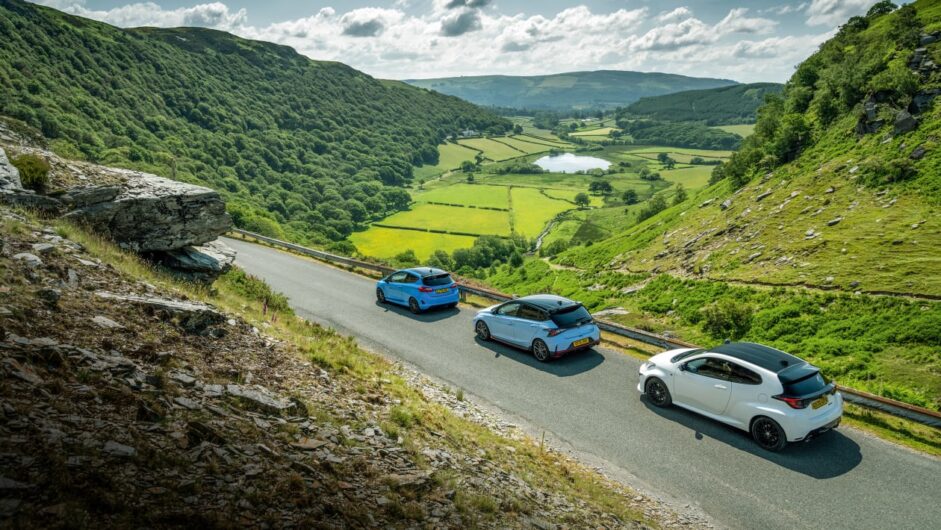
The Fiesta is fabulous fun and blessed with a sparkling chassis, but is starting to look and feel its age. The suspension upgrade is effective, but manually adjustable dampers aren’t for everyone. Also $35k somehow feels like a lot of money for a Fiesta, but if you only care about those moments from turn‑in through apex to exit, it’s got a very strong appeal.
Which leaves the Yaris. I’m torn between going with it or the Hyundai, but JB is more decisive, making the Toyota his winner by a wafer thin margin: ‘The Yaris is pretty irresistible, even though I miss the front end of the Circuit Pack version. It’s the most money but feels like the best value.’
Hand on heart I know he’s right. The Toyota is a remarkable and uniquely exciting machine. And yet the fizz, vibrancy and playfulness of the front-wheel-drive cars is undeniable and – for me at least – a truer representation of what I would describe as the definitive hot hatch driving experience.
We might be preoccupied with the rise of EVs and the demise of ICE, but in terms of pure driving enjoyment these three hot hatches are about as good as it gets. Enjoy them while you can.
Specs
| Ford Fiesta ST Edition | Toyota GR Yaris | Hyundai i20 N | |
| Engine | In-line 3-cyl, 1497cc, turbo | In-line 3-cyl, 1618cc, turbo | In-line 4-cyl, 1591cc, turbo |
| Power | 197bhp @ 6000rpm | 257bhp @ 6500rpm | 201bhp @ 5500rpm |
| Torque | 214lb ft @ 1600-4000rpm | 265lb ft @ 3000-4600rpm | 203lb ft @ 1750-4500rpm |
| Weight | 1187kg | 1280kg | 1190kg |
| Power-to-weight | 169bhp/ton | 204bhp/ton | 172bhp/ton |
| 0-100kph | 6.5sec | 5.5sec | 6.2sec |
| Top speed | 231kph | 228kph (limited) | 228kph |
| Basic price | $35,148 | $36,675 | $30,536 |
This article originally appeared at evo.co.uk
Copyright © evo UK, Autovia Publishing

